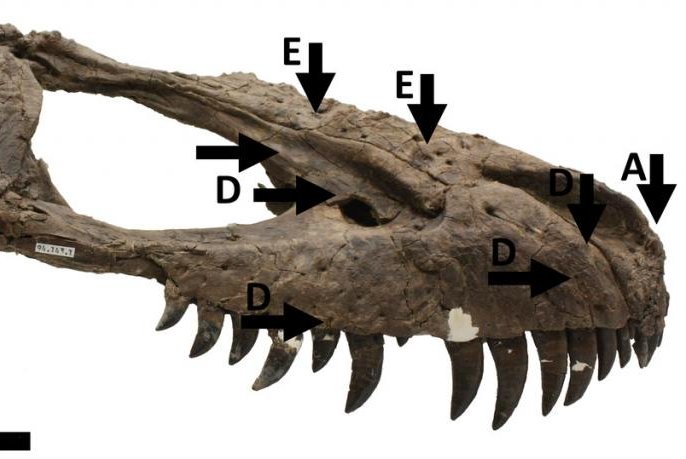A newly discovered fossil of a Daspletosaurus in Alberta, Canada has added evidence to the argument that all tyrannosaurs probably fought their own species and were cannibalistic. Dr. David Hone from Queen Mary, University of London, and colleagues were able to make the determination through a crowdfunded program though Experiment.
The fossil of a sub-adult (older teenage) Daspletosaurus shows evidence of multiple fights during its life and of being eaten in part after the animal died. The specimen was 19 feet long and weight 1,100 pounds at the time of its death. The cause of death is uncertain but the researchers do not think the animal died as the result of an attack by another Daspletosaurus or any other dinosaur.
The fossil shows multiple head injuries from combats. The tooth marks from these injuries resemble the shape of the teeth of tyrannosaurs. One bite mark on the back of the head took out a small part of the skull. The growth of new bone in this region indicates the animal survived this injury. This is the first known evidence of a tyrannosaur recovering from severe head trauma that pierced the skull and probably the brain.
Dinosaur life was tough for predators. This new fossil may have been attacked by a sibling or a larger family member. In the dinosaur world, anybody was food including family. The discovery adds to the body of evidence that tyrannosaurs were combative and cannibals as well as scavengers of the dead of their own kind.















